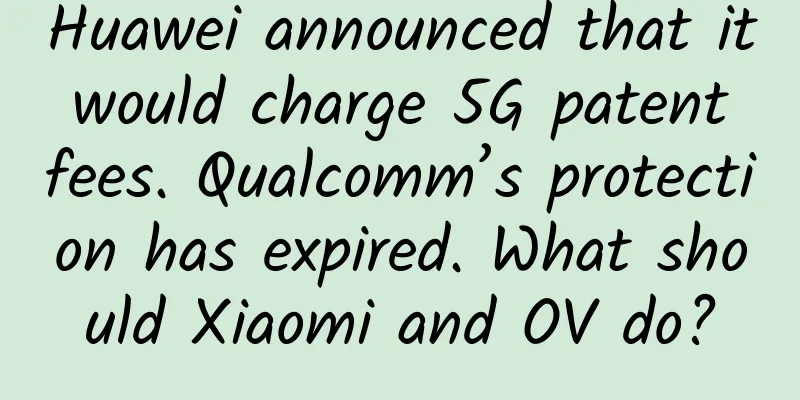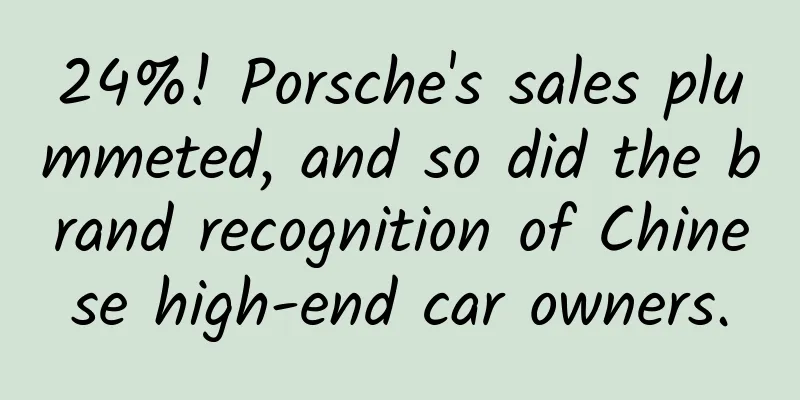Huawei announced that it would charge 5G patent fees. Qualcomm’s protection has expired. What should Xiaomi and OV do?

|
The mobile phone industry is about to change! When the low-key Huawei showed its sharp teeth, giants in the mobile phone industry such as Qualcomm, Apple, Samsung, Xiaomi, OPPO, and vivo were not spared. On March 16, Huawei held a press conference for the "Innovation and Intellectual Property White Paper 2020" at its headquarters in Shenzhen. Ding Jianxin, director of Huawei's Intellectual Property Department, announced that Huawei will charge royalties for 5G patents starting in 2021. The charging standard is based on a percentage of the selling price of the mobile phone, and the patent licensing fee for a single 5G mobile phone is capped at US$2.5. It is foreseeable that Huawei's decision will cause a stir in the mobile phone industry. However, compared with its peer Qualcomm, Huawei's decision to charge 5G patent fees is three years late. Why did Huawei announce the collection of patent royalties at this time? This decision may be related to the suppression by the United States. As we all know, due to the decision of the United States, Huawei has been unable to purchase mobile phone chips since September 15 last year. Even its self-developed Kirin chips cannot be handed over to TSMC for production. Huawei's mobile phone business has taken a sharp turn for the worse under pressure from the supply chain. In desperation, Huawei announced the complete sale of the entire assets of the Honor mobile phone brand at the end of October 2020. Huawei only retains the Huawei-branded mobile phone business and product line. Even so, Huawei's mobile phone chips are still not enough. For example, the Mate 40 series has been out of stock for more than half a year since its release. According to the forecasts of some research institutions, Huawei's mobile phone shipments may drop to 70 million units in 2021. Under such circumstances, the patent exemption agreements previously signed between Huawei and major manufacturers such as Apple, Samsung, and Qualcomm are no longer equal. Therefore, Huawei's Chief Legal Officer Song Liuping revealed that he will renegotiate 5G patent royalties with Apple and Samsung. When it comes to collecting patent fees, Huawei has a solid foundation and confidence. According to Huawei's official data, as of the end of 2020, Huawei had a total of more than 100,000 patents, 90% of which were invention patents. Statistics from patent agencies in China, Europe, the United States and other countries show that Huawei often ranks first in the number of patent applications each year. In terms of 5G patents, Huawei's layout is also very deep. Not long ago, the internationally renowned patent data company IPLytics released the "Global 5G Technology Patent List". Huawei ranked first in the world with a 15.39% share of 5G patents, and Qualcomm, ZTE, and Samsung ranked second, third, and fourth respectively. Huawei is also the developer of the 5G short code control channel standard, which means that Huawei is the company that has made the greatest contribution in the 5G field. Under the crazy suppression from the United States, Huawei can only renegotiate 5G patent royalties with giants such as Apple, Samsung, and Qualcomm to recover some losses. However, Huawei's charging standards are much more generous than Qualcomm's. Qualcomm has always been known as a "patent troll" in the mobile phone industry. With more than 30 years of technological accumulation in the communications industry, even Huawei and Apple cannot escape the disaster. In 2019, Apple and Qualcomm reached a settlement in the patent litigation war. Apple not only signed a six-year procurement agreement with Qualcomm, but also paid Qualcomm US$4.7 billion in patent licensing fees. Last year, Huawei also paid Qualcomm a one-time patent licensing fee of US$1.8 billion. In terms of 5G patent fees, Qualcomm also set standards early on. In 2018, Qualcomm announced the 5G patent fee standards, and the prices were staggeringly high. Generally speaking, Qualcomm divides 5G patent licensing fees into two levels. One is for 5G mobile phones that only use Qualcomm's core patents. Under this standard, single-mode 5G mobile phones are charged 2.275% of the terminal price, and multi-mode 5G mobile phones (backward compatible with 3G/4G/5G) are charged 3.25% of the terminal price. The other is 5G mobile phones that use Qualcomm's core patents and non-core patents. Single-mode 5G mobile phones and multi-mode 5G mobile phones are charged 4% and 5% patent licensing fees respectively. Single-mode 5G mobile phones have never appeared, so Qualcomm's 5G patent licensing fees are basically charged at 3.25%-5%. For example, a 5G mobile phone priced at 5,000 yuan on the market will need to pay Qualcomm a patent fee of 162.5-250 yuan. Compared with Qualcomm's 5G patent licensing fees, Huawei's maximum usage fee of US$2.5 is simply not worth mentioning. However, Huawei's announcement of 5G patent fees actually caught Qualcomm off guard. Qualcomm has long regarded itself as the "patent leader" in the communications industry with its strong patent barriers. After Qualcomm collects patent licensing fees from Xiaomi, OPPO, VIVO and other mobile phone manufacturers, it then signs a patent exemption agreement with Huawei to provide patent protection to these manufacturers. Huawei is no longer allowed to charge patent fees to Xiaomi, OPPO, VIVO and other mobile phone manufacturers, even if these manufacturers use Huawei's 5G patents in their mobile phones. Now that the patent balance between Huawei and Qualcomm has been broken, Huawei may directly charge domestic Qualcomm manufacturers for 5G patent royalties. It seems to be charging domestic mobile phone companies, but in fact it is a slap in the face of Qualcomm, an American company, and undermines Qualcomm's industry position. So what should domestic mobile phone companies such as Xiaomi, OV, etc. do? In my opinion, there are two directions. One is to strengthen technical cooperation with Huawei, form a Chinese mobile phone alliance, and jointly fight against the patent hegemony of American companies. The other is to strengthen the research and development of core technologies and embark on a path of self-reliance and self-strengthening. |
<<: Driven by 5G demand, smartphone shipments are expected to grow 5.5% this year
Recommend
How to get massive traffic through ranking promotion through Baidu Aladdin channel!
The time it takes for SEO to take effect is getti...
Thoughts and Experiences from 1800 to 2500
I have been relatively free during this period, s...
Being a "nice guy" is a disease that is quietly ruining your life
In life, are you a "good guy" or a &quo...
Marketing Planning: How do users make choices?
The greatest value of this article is to establis...
Useful Information | The most comprehensive guide to short video distribution on Douyin, Kuaishou, etc.!
In the Internet age, short videos are king. Short...
What is ChatGPT? It will bring these changes to our lives↓
Welcome to Science Popularization China’s special...
How to promote and attract traffic to the mini program mall and how to promote WeChat mini program traffic?
WeChat currently has nearly 1 billion users, and ...
The CTR is the same, which copy has a better conversion rate?
Have you ever encountered such accounts in the pr...
China App Rankings in Q2 2016: The unstoppable dark horse and the unbeatable leader!
The freshly released “2016 Q2 China App Rankings”...
Are those 9-yuan WeChat group courses that are all over the place worth buying?
I don’t know if you’ve felt this way recently. Th...
B Station brand marketing strategy!
Is Bilibili still communicating with Generation Z...
Do you have the habit of "washing your butt"? Don't be shy, it's a good habit...
We wash our faces every day, and most people soak...
Wang Fang: Beautiful Greater China
: : : : : : : : : : : : : : : .mp3 8.63M ├──【Free ...
13 ways to promote Sina Weibo
1. Value creation of Weibo content publishing The...
Which programming languages are most popular at hackathons?
Choosing which programming language to learn can ...









